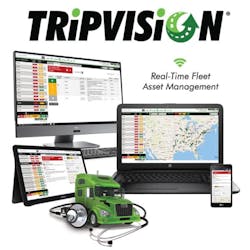Tech Tip: Ignore transient faults to avoid unnecessary repair costs
Not all faults are created equal; not only do they vary in severity levels, but certain faults also take diagnostic precedence while others should be ignored completely. In this tech tip, we look at faults that may be active and can have a high associated count but should be ignored by the technician or fleet dispatcher.
Some faults have a high rate of occurrence, but a low, or nonexistent, impact. For example, we recorded instances of a fault occurring across various vehicles more than 2,000 times, but only had one occurrence of being an active fault. This particular fault we observed would trigger a high severity rating in services that rank faults based on their perceived impact on the vehicle. These often occur because of a unique vehicle state, such as the first few seconds of the engine startup, and do not accurately represent a problem on the vehicle. We call these transient faults. While many technicians can spot these faults, there are steps to take to reduce their occurrences and help avoid situations where dispatchers act incorrectly when detecting one of these faults remotely.
The first step for a technician is to simply be aware these issues exist, learn to spot them, and choose to ignore them. Take note of faults that only appear briefly and always during the same event, such as the initial crank of the engine. By regularly detecting these faults, you will start to develop a pattern for each OEM component you diagnose and repair. Recognizing common transient faults on popular components will help you spot these faults on newer vehicles that contain familiar components.
To alleviate unnecessary routing of a vehicle to a repair facility, utilize a real-time fleet asset-management solution that is configurable to your needs. For example, TripVision by Noregon allows users to edit or create action plans for vehicles down to the fault level. If a transient fault is making a vehicle appear to have a more severe issue than it truly does, technicians can pinpoint these faults and edit the action plan. For example, the new plan could include directions for the dispatcher to monitor the fault for a few minutes to see if it goes away, rather than immediately routing to a service center or the side of the road.
Reducing Occurrences
To reduce the occurrence of transient faults, ensure your vehicle’s electronic components, or ECUs, are running the latest software version. OEMs are often aware of common transient faults on their components and update their component’s software to reduce instances of those faults. Using JPRO, Noregon’s advanced in-shop diagnostic and repair solution, components are automatically identified, down to the serial number and software version, allowing users to recognize when a component’s software is not the most recent edition. It is highly recommended to send that vehicle to the dealership to reflash the component to experience the fewest issues with that component.
Transient faults will remain an inevitable aspect of diagnosis, so it is important for all members of an organization who may react to faults be able to spot them. Train team members to recognize these faults, update action plans to help dispatchers avoid making incorrect, hasty decisions, and keep your vehicles’ ECU software versions updated to avoid complications caused by transient faults.
Information provided by Noregon